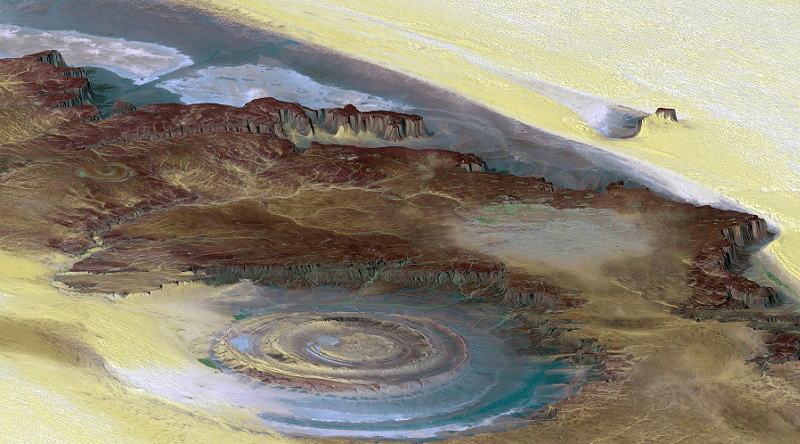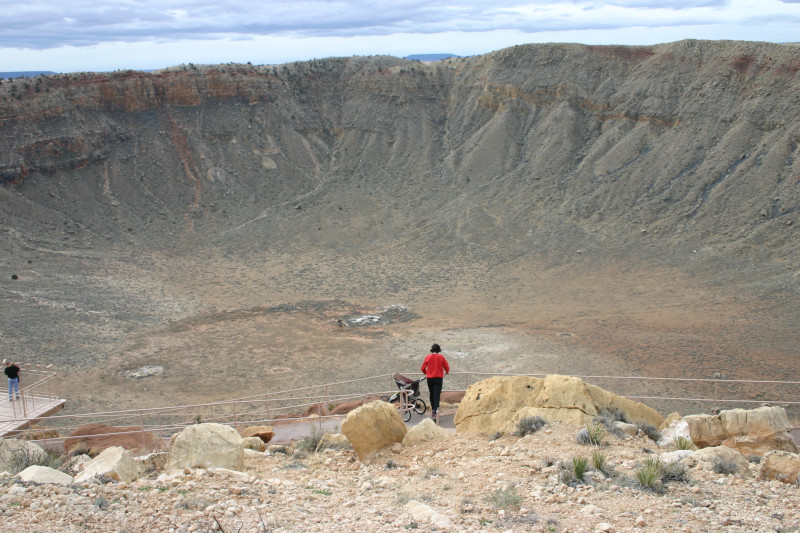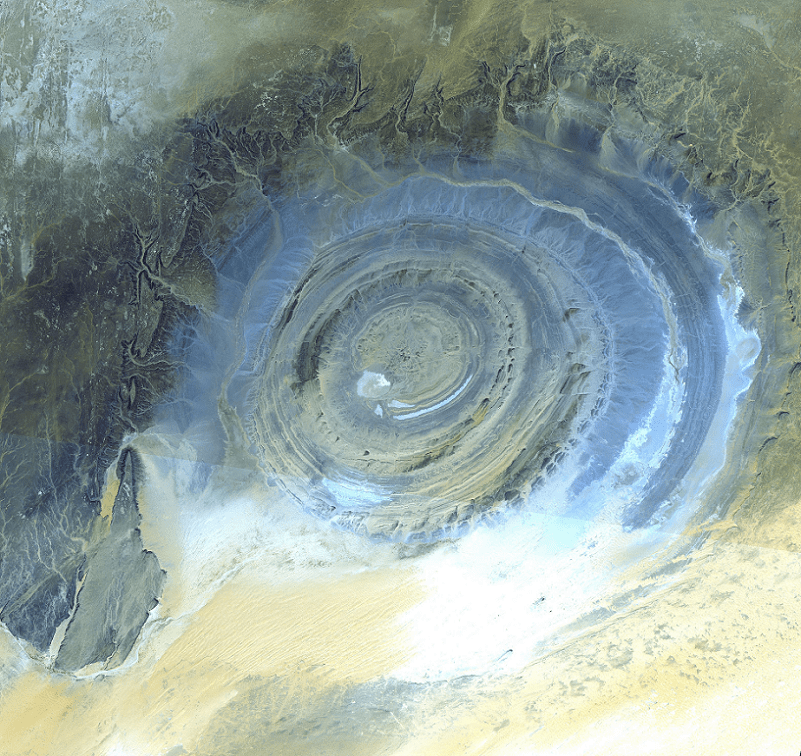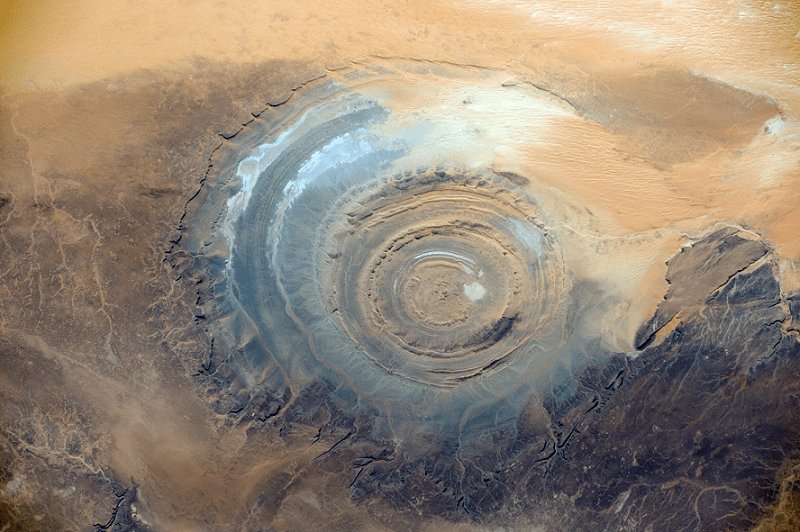 Source: https://bit.ly/2sUoNKk Image: NASA/JPL/NIMA Public Domain Image
Source: https://bit.ly/2sUoNKk Image: NASA/JPL/NIMA Public Domain Image
Eye of the Sahara Facts
- This mind-blowing creation of geological processes most often goes by the attention-grabbing name of the Eye of the Sahara. That’s not the only moniker applied to it, though. That’s because it’s also called the Guelb er Richât and the Richat Structure.
- Regardless of the term one chooses to use, though, it remains an incredible feature. It’s also a source of some controversy among researchers. Although the preponderance of evidence indicates a terrestrial origin, some still think it’s an impact crater.
- Incredibly, this extraordinary geological feature was actually unknown to man until it was accidentally spotted from space. Between its extreme remoteness and its sheer size, no one noticed its uniqueness before, even when passing through it.
- Credit for its discovery as a unique structure goes to two astronauts. During their Gemini 4 mission, they noted the structure by accident. Astronauts White and McDivitt share credit for this highly fortuitous discovery within the annals of science.
- Yet, the aptly-named Eye of the Sahara isn’t only famous for its physical distinctiveness. That’s true due to the many remarkable items found there. The site also contains an extraordinary collection of stone tools dating back as far as 1.7 million years ago.
- Accordingly, the site holds a respected status for this, as well. Due to the existence of such an unparalleled find, it received numerous accolades. The International Union of Geological Sciences chose it as one of the first 100 geological heritage sites.
Related Articles




Eye of the Sahara Physical Description
The amazing Eye of the Sahara immediately captivates all those who learn of it. Obviously, its unusual appearance represents an intriguing sight for many individuals. But, the sheer physical dimensions of this natural marvel nevertheless equally astounds the informed.
The formation boasts a roughly circular shape, with slightly irregular outlines. Overall, it holds a diameter that measures a stunning 25 mi (40 km). It’s also composed of several concentric rings. The largest of these, the central area, is roughly 19 mi (30 km) in diameter.
Each of its rings manifests a wall, called a dike. The inner ring dike averages 65.6 ft (20 m) thick. It sits about 1.9 mi (3 km) from the approximate center. The outer ring wall, though, is larger, at roughly 164 ft (50 m) thick. But it lies about 4.3-5.0 mi (7-8 km) from the center.
A wide variety of rock structures also appear within the various sections of the Eye of the Shara. These include differing volcanic rocks, gabbros, carbonatites, and kimberlites. Many of these seem to have originated from ancient lava flows within the awesome structure.
Nature didn’t simply stop there, though, when creating this masterpiece. As if these weren’t enough, numerous hydrothermal features also exist inside the confines of the site. These include a multitude of formations consisting of sandstone, silica, and limestone.
Eye of the Sahara Location, Structure, and Mysterious Origins
The location where the mesmerizing Eye of the Sahara formed probably won’t surprise many people. That’s true since it lies in a region of the world already quite well known for its abundance of natural marvels. The site sits on what’s now the continent of Africa.
What’s more, its location’s also extremely remote. This aided in its eluding discovery until modern times. It’s to be found in the western section of the country of Mauritania. This, as the common name clearly indicates, places it in the equally fascinating Sahara Desert.
Situated in the northwestern section of that continent, it’s further located inside another remarkable place. That amazing feature itself remains known, especially locally, as the Adrar Plateau. In the country it appears in, this puts it in the western central portion.
The Eye of the Sahara represents what scientists call an elliptical dome, albeit a highly eroded one. Several distinct layers of sedimentary rocks appear inside its walls. A wide variety of minerals are present, as well. These include limestone and quartz-rich sandstone.
It’s widely believed by the majority of geologists to be the result of uplift. Evidence indicates that its creation began approximately 100 million years ago. Studies undertaken in the 1950’s and 1960’s, in the minds of most researchers, disproved the impact theory.
Features Sharing Its Range



Check out our other articles on 4 Startling Atlantic Ocean Sharks, Hyacinth Macaw, McMurdo Dry Valleys, Crocodile Fish, Red-shanked douc, Leaf Slug, Christmas Cheer, American Alligator










Leave a Reply